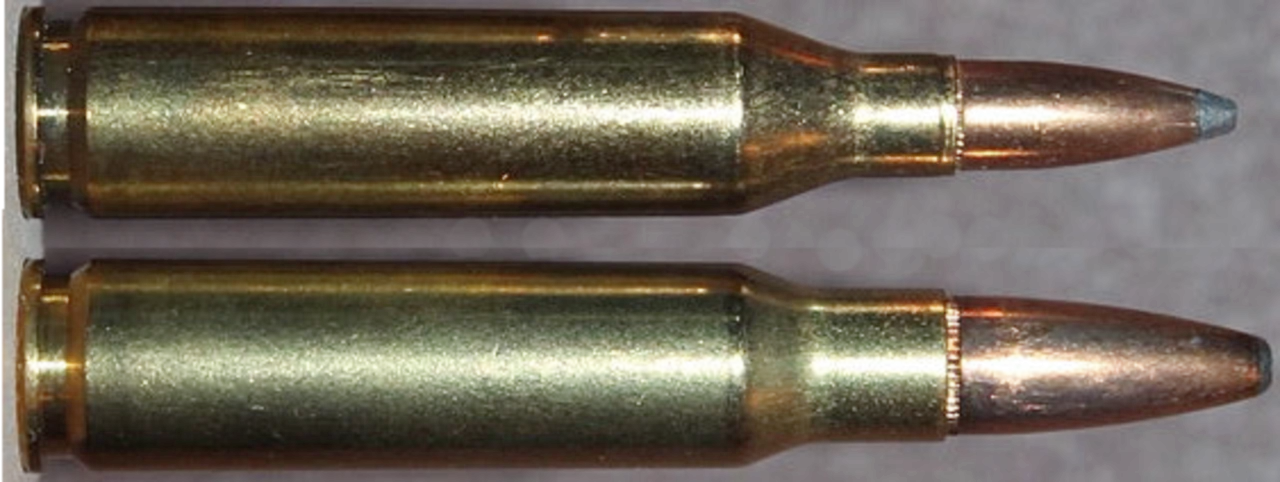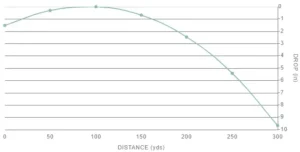
.243 Winchester
The .243 Winchester is one of the most popular rifle cartridges in the world. It has been around since 1955 and is still used today by hunters and sporting shooters all over the globe.
Table of Contents
The .243 Winchester (6x52mm) is one of the most popular rifle cartridges in the world. It has been around since 1955 and is still used today by hunters and sporting shooters all over the globe.
Definition of the .243 Winchester
Developed by “necking down” the ever-popular .308 cartridge (Meaning it has the same case as the .308 Winchester). The .243 was developed with the intent of making a light calibre rifle capable of dispatching small game and also being able to step up to tackle small deer. In this endeavour, Winchester hit the mark. The 80-grain bullet is primarily used for varmints with the 100-grain used for deer-sized targets.


The .243 Winchester - Use cases
The cartridge was originally designed in the USA for hunting small deer, antelope, and sheep at ranges out to 400 meters. It was originally developed with the intent of making a light calibre rifle capable of dispatching small game and also being able to step up to tackle small deer. In this endeavour, Winchester hit the mark. It’s also a popular hunting round in Australia to hunt a variety of game such as foxes, Pigs, Goats as well as Small Deer. The 80-grain bullet is primarily used for varmints with the 100-grain used for deer-sized targets. The velocity reduces rapidly at 120 grains thereby limiting the effective range.
Description
As mentioned above, the .243 Winchester is essentially a necked-down .308 Winchester. This fact means there are plentiful stocks of both brass and primers for both manufacturers and reloaders alike due to the .308’s availability/popularity.
It’s a very versatile round with its low recoil, and flat trajectory and can be loaded with a huge array of projectile weights depending on what you want to do with it – target shooting, small or big game hunting! The .243 Winchester will get the results you are looking for, and it’s a perfect selection for young or novice hunters who are just beginning their journey into larger centerfire cartridges.
If you’re looking into a .243 Winchester, check out our article on Basic Cartridge Selection for what game you can expect to humanely take down with this ripper.

History
The mighty .243 was introduced to the world in 1955 by Winchester Repeating Arms Company and was chambered in both the Winchester Model 70 bolt action and the Model 88 lever action rifles (please see a figure of the Winchester Model 70 bolt action available in 2023). The round was initially intended to be used as both varmint and big game, with both low recoil and flat trajectory as the aim.
Unfortunately, the specific inventor of the .243 Winchester is not known, however, Warren Page (gun enthusiast and editor) had been playing around with a 6.2mm cartridge for his personal hunting goals. It’s unknown, but Page may have been the link to the 243 Winchester.
Today the .243 is not only used for hunting applications but is also a popular choice for long-range target shooters, due to decent projectile selection (weights range from 55 grains to 115 grains) for hand loading and bullet coefficients (some 6.2mm projectile coefficients can be 0.500 or higher, which is bloody good if you’re a long-range shooter).
Pros and cons
Pros
- The .243 is a versatile cartridge that is suitable for medium to long-range target shooting as well as varmint and medium game hunting.
- For take-down power and trajectory the .243 bats well above its weight, meaning it has a very mild recoil-to-power ratio, making it a great selection for shooters that are smaller in stature.
- Due to the low recoil and flat trajectory, the .243 is known as a very accurate calibre from short to medium distances.
- There is a good selection of factory ammunition available in most gun shops (or sporting shops) across the country. In addition for our hand loaders, there are plentiful projectile and powder options available and are rarely out of stock.
Cons
- Although the .243 has an s*#tload of powder (or fuel) that generally produces a muzzle velocity of around 3100 FPS (standard off-the-shelf ammo with a projectile weight of 75/80gr), the energy and velocity drop off rapidly around 400 to 450 meters. As a consequence, there are “way” better calibres out there for long-range hunting or shooting if that’s your thing.
- Due to the high muzzle velocity the rifling in the .243 gets eroded or “shot out” quicker than slower-moving cartridges. Meaning you may be up for a re-barrel sooner than you think (especially if you’re a keen shooter).
- If you’re looking for a hunting rifle for a large game, move on, this calibre will not humanely take out a large Red Deer (hate mail come at me). This calibre has many uses, but a large game is not one of them.
FAQ (Frequently Asked Questions)
What is a .243 Winchester good for?
The .243 Winchester is suitable for medium to long-range target shooting, as well as varmint and medium game hunting. It is also a nice centerfire to start novice shooters on due to its low-impact recoil.
How far will a 243 shoot accurately?
The .243 Winchester is an accurate target shooter out to 1,000 meters (1,100 yards) or more. It is limited in its takedown ability for game beyond 400-500 meters (450-550 yards) because of the rapid velocity drop-off with higher grain projectiles.
How does 243 Winchester compare to 308?
On average the .243 ammo is less expensive than the .308. The 243 also has a flatter shot and higher velocity. The 308 on the other hand carries tremendous stopping power, making it ideal for larger targets at longer ranges. The .243’s low recoil is nice to fire and affordable making this an excellent cartridge to use when introducing new shooters to the sport.
Does a 243 kick more than a 308?
No. The .243 Winchester kicks nowhere near as much as a .308 which can make it a great option for novice or slightly built shooters.
Average recoil energy:
- 243: 16 Joules (12 ft/lbs)
- 308: 30 Joules (22 ft/lbs)
How far does a 243 drop at 300 yards?
| DISTANCE | FLIGHT | DROP | WIND DRIFT | VELOCITY | ENERGY |
|---|---|---|---|---|---|
| 0 yds | 0.00 sec | -1.5 in | 0 in | 3,260 fps | 2,004 ft-lbs |
| 100 yds | 0.10 sec | 0.0 in | 0 in | 2,970 fps | 1,663 ft-lbs |
| 200 yds | 0.20 sec | -2.4 in | 0 in | 2,698 fps | 1,372 ft-lbs |
| 300 yds | 0.32 sec | -9.7 in | 0 in | 2,441 fps | 1,124 ft-lbs |

Is a 243 loud?
Rifle gunshot in decibels:
- Average rifle: 158 dB
- .22: 140 dB
- .243: 160 dB
- .30-06: 163 dB
- 7mm Magnum: 166 dB
It would be safe to say that the .243 is slightly louder than the average rifle.
What is the .243 Winchester?
The .243 is a necked-down version of the .308. It is a high-velocity, low-recoil cartridge that is good for hunting everything from varmints to small deer at small to mid ranges. It is also a handy target shooter at mid to long ranges.



